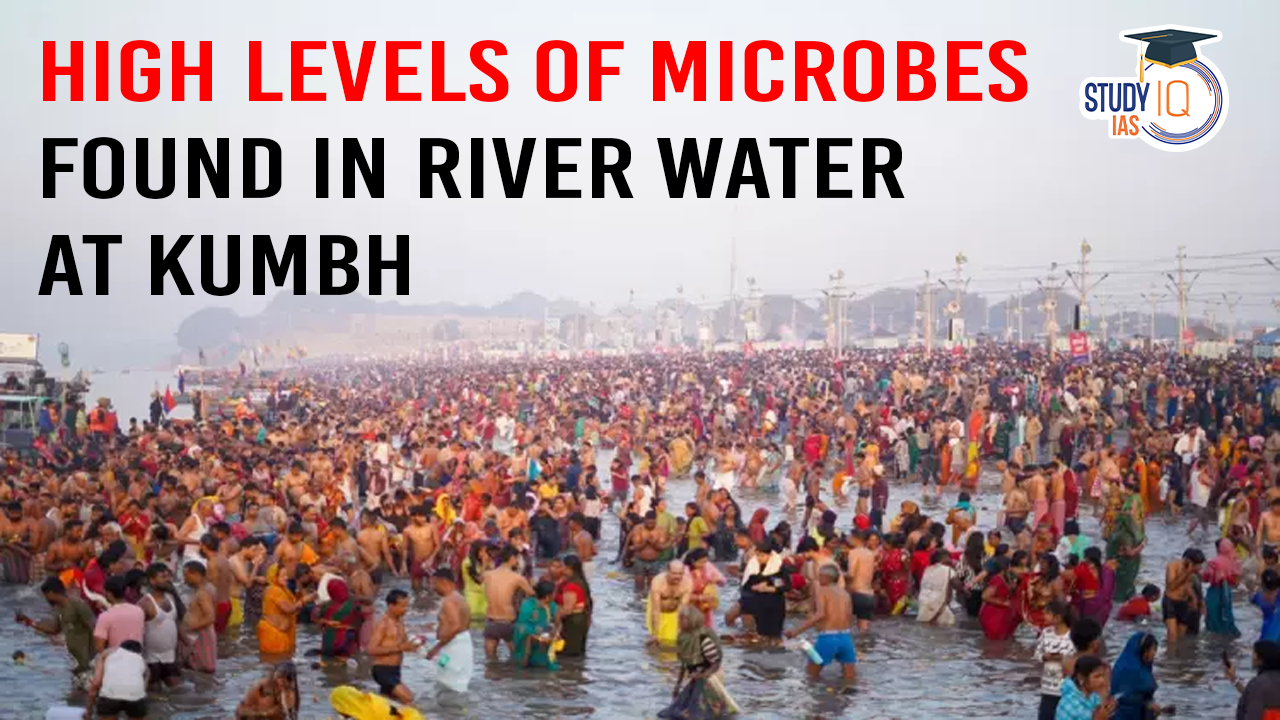Table of Contents
Context: A recent report by the Central Pollution Control Board submitted to the National Green Tribunal has revealed high levels of faecal coliform in the Ganga and Yamuna rivers at Prayagraj during the ongoing Maha Kumbh Mela.
Key Findings of the CPCB Report
Unsafe Water for Bathing
- River water at all monitored locations failed to meet the primary water quality standards for bathing due to excessive faecal coliform (FC) levels.
- The permissible limit of 2,500 units per 100 ml was exceeded at all points.
Source of Contamination
- The massive influx of pilgrims during auspicious bathing days significantly increased the concentration of faecal bacteria.
- Sewage discharge into the river also contributed to the poor water quality.
| Central Pollution Control Board (CPCB) |
|
Factors Contribute to High Levels of Microbes in River Water at Kumbh
The high levels of microbes found in Sangam River water during the Kumbh Mela, a major Hindu pilgrimage, is a significant concern for public health and environmental protection. The Kumbh Mela attracts millions of devotees who gather to take a ritual bath in the holy river, often leading to high concentrations of pollutants, including microbes, in the water. Several factors contribute to this:
- High Human Activity: The immense number of people bathing, performing rituals, and disposing of waste leads to contamination of the water with various microbes, including bacteria and viruses, which may result in waterborne diseases.
- Water Pollution: Waste products from religious offerings, such as flowers, oils, and plastics, as well as untreated sewage, contribute to the overall contamination of the river.
- Environmental and Hygiene Issues: Lack of proper sanitation infrastructure in some areas, especially during large gatherings, further exacerbates the situation, as untreated wastewater may flow directly into the river.


 Bioluminescent Beaches - Kavaru
Bioluminescent Beaches - Kavaru
 Malabar Grey Hornbill, Characteristics a...
Malabar Grey Hornbill, Characteristics a...
 Salt Pan Land Cleared for Dharavi Redeve...
Salt Pan Land Cleared for Dharavi Redeve...





















